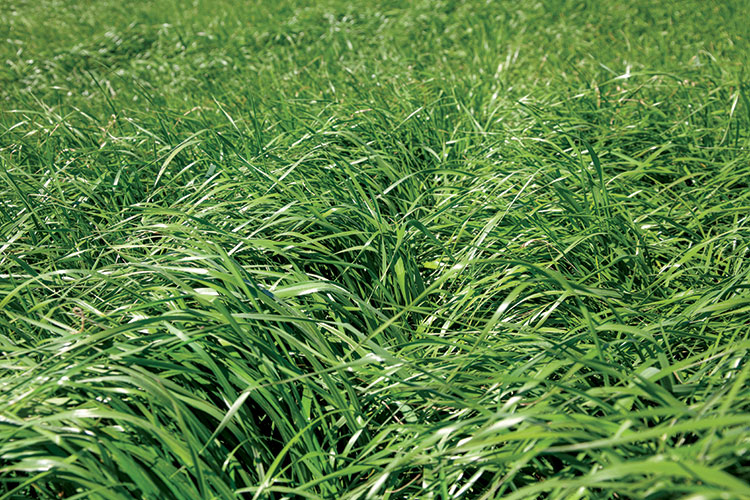The author is an associate professor and extension beef specialist with Auburn University.

High-quality, lush pastures offer tremendous benefits for supporting animal performance in grazing systems. The following provides a few tips on how to use these pastures most effectively during the winter and spring months:
If it’s just a haze, don’t graze! Weary from cold days spent feeding hay to cattle, we have all experienced the temptation of turning cattle out on winter pasture just before it is ready for grazing. This occurs when the forage is growing well and the horizon of the pasture has a green appearance, like a haze, but the forage has not fully tillered or “filled-out” to make a closed plant canopy ready for grazing.
Make sure that pastures are well-established before turning cattle onto cool-season pastures. Grazing of most cool-season forage grasses used in the southeastern U.S., such as small grains, ryegrass, and tall fescue, can occur when forages have reached a minimum of 8 inches in height. It is important that these forages are not overgrazed in the spring and should be maintained to at least a 3- to 4-inch stubble height.
Understand the impacts of animal management prior to turnout. Most cattle transitioning to cool-season pastures have been previously managed on a diet consisting of hay and supplemental feeds during the late fall and early winter forage production gap. Shifting from a high-fiber diet to a high-moisture, low-fiber diet takes time for the rumen to adjust and efficiently digest the high-quality forage.
In a commercial heifer development program conducted by Auburn University and the Alabama Cooperative Extension System, researchers have observed that it takes a three- to four-week time frame for beef replacement heifers to adequately transition onto cool-season annuals and achieve a weight gain of greater than 1.5 pounds per day.
Limit graze to ease the transition. Limit grazing is a strategy that provides cattle short-term access to a high-quality forage crop. Providing access to cool-season annuals for a few hours per day (generally four to six hours), two to three times per week may significantly reduce hay and supplementation needs during the winter months. Limit-grazing may be utilized to maximize forage use efficiency in this system, reduce forage trampling and waste, and provide access to early growth of cool-season forages.
Offer free-choice hay on pasture. Feeding hay while on cool-season pastures may help provide cattle with adequate roughage to more efficiently digest high-quality pasture. This strategy can also be used to help extend grazed forage availability for cattle grazing cool-season forages.
Consider animals with the greatest nutrient requirements. Cool-season forages offer the highest plane of nutrition during the calendar year for grazing beef cattle. Consider using a grazing strategy that allows animals with the highest nutrient needs to access the forage first. This may include developing replacement heifers, creep grazing for calves, or mature cows in peak lactation (up to 60 days after calving).
Think about strategies to manage for appropriate residual forage. Overgrazing lush pastures can be detrimental for pasture regrowth. Maintaining adequate residual stubble height is an important consideration as pastures recover from periods of cold weather. Allowing a recovery and regrowth period after times of extreme cold can help improve forage production during the spring. Strategies such as rotational stocking or limit grazing help control the amount of time spent on pasture, which can help provide time for adequate regrowth of cool-season pastures as well.
Provide products to improve forage digestion and reduce the risk for bloat. Technologies such as ionophores can also help improve animal daily gains and may help lower the potential for bloat in lush, high-quality pastures. These can be delivered in mineral supplements or in hand-fed supplements. A common practice is to provide these in a free-choice mineral for cattle grazing high-quality, cool-season pastures.
This article appeared in the March 2021 issue of Hay & Forage Grower on page 9.
Not a subscriber? Click to get the print magazine.

